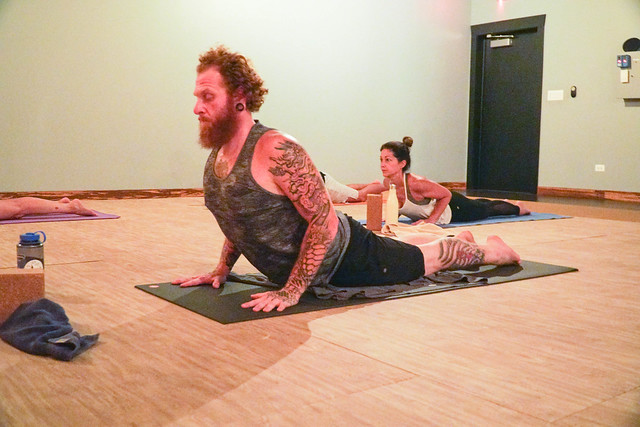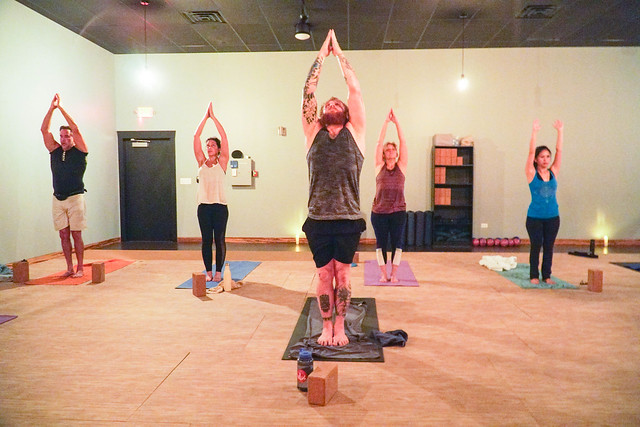Meditation can prove to be an essential tool to your overall wellness. While physical activity has its own benefits, ensuring that your mind and spirit are feeling healthy is crucial. The idea of meditation may seem overwhelming to beginners, with so many different options and methods to ease your mind. In this post, we’ll look at 25 effective forms of meditation, explain them and show you how to pursue the ones that seem appealing and right for you!

1. Vedic Meditation: Vedic meditation is one of the oldest meditations with its origins coming from ancient India. This type of meditation is a mantra-based meditation where you repeat a particular phrase that has been chosen for you by your teacher. It is not associated with any religion, but rather with the Vedic philosophical system which helped birth mathematics, yoga, and more. The mantras have specific qualities that calm the nervous system and the brain to relax from daily life and increase the path toward spiritual living. It is performed in a seated position, and the length of time varies depending on the mantra.
2. Gratitude Meditation: Gratitude meditation is a type of meditation that focuses on the feeling and expression of gratitude for your life and everything in it. Gratitude meditation can be practiced informally at any time during your day; it is not something you have to sit down, sit, and practice. Rather, it can be done immediately upon waking in your bed or even done over your next meal. Giving thanks for what you have and the things in your life, both good and bad, challenging and happy, enable the practitioner to grow through times of change and understand life from a greater perspective. To practice this technique, think of what you are grateful for and allow yourself to sit with what that feels like.
3. The Omega Institute’s YouTube channel offers a wide variety of meditations, including Noah Levine’s basic Buddhist meditation for beginners and Pema Chodron’s thoughtful Tonglen meditation, each under five minutes.
4. In another five-minute meditation, Robert Eric Dinenberg, MD, MPH talks you through a mindfulness-focused meditation.
5. Daily Meditation: Daily meditation is the act of meditating on an everyday basis. When something is practiced every day, it becomes a habit. Meditation on a daily basis is a positively reinforcing habit because it helps to reduce stress, cultivate mindfulness, cope with change, and enhance the overall quality of life. It is said that meditating every day, even for only 5 minutes, is better than meditating for 30 minutes once a week. It is helpful to do it at the same time every day.
6. Sleep Meditation: Drifting off to sleep may be a sweet dream for some while for others it may be a restless night of tossing and turning. Sleep meditation is an all-natural antidote for insomnia and sleep deprivation that leaves practitioners feeling refreshed, energized, and reinvigorated to start the day with a clear head. Meditation for sleep calms the mind by allowing it to focus on the present moment through breath and body awareness. It can be performed in bed or as a practice before sleeping. The reason for this is because meditation increases the brain waves which induce sleep such alpha, theta, and delta and decrease beta waves, which can cause insomnia.
7. Stop, Breathe, and Think offers a short meditation focused on breathing. Try this three-minute exercise.
8. YellowBrickCinema offers lengthy (up to eight hours!) meditation music compositions.
9. Morning Affirmations: Using affirmations in the morning upon waking is a way to set your mindset for the day. Using positive affirmations is a meditation tool to train your brain to be at its very best from the moment you wake up. They are a great way to prepare your mind for meditation by letting go of worry, promoting tranquility, and bringing the mind into the present moment. It is beneficial to use one or two as an anchor point at the beginning or end of a meditation through which you can focus your mind on. It is important that you use positive, present-tense affirmations when using this technique. An example would be “I am free from stress today”.

10. Merkaba Meditation: The word Merkaba has Egyptian roots and is an energy body meditation technique. Mer means “a light that rotates”, ka means “spirit”, while ba means “physical body”. This merkaba meditation technique activates this particular energetic shape around your body to accelerate consciousness and enlightenment. It is performed through particular breathing techniques with 18 steps. The shape of the merkaba is are 2 intersecting 3-dimensional triangles with one pointing downward one pointing up. The meditation helps rotate this merkaba energy field around your body to assist in the ascension process.
11. Put yourself on the shore instantly with ocean waves crashing.
12. Insight Timer has it all—meditation music, guided meditation, and a customizable meditation timer.
13. Loving-Kindness Meditation: Loving-Kindness Meditation, also called Metta Meditation, is a Buddhist form of meditation that involves cultivating and sending the feeling of loving-kindness toward yourself and others in your life. First, you must cultivate loving-kindness toward yourself, then toward someone you respect (such as a teacher), someone you love highly (such as a family member), someone neutral (such as the grocery store clerk), and someone you feel disregard toward (which may be the most difficult). You can cultivate the feeling of loving-kindness through visualization or reflection of the feeling itself. This meditation helps cultivates an attitude of serenity and care through any situation, especially in the face of challenge.
14. Zazen Meditation: Zazen meditation is the core meditation practice of Zen Buddhism. It helps cultivate a sense of inner and outer peace. It is practiced in a seated position, often on a cushion called a zafu, however, a variety of positions can be used to accommodate anyone. The spine is long with the hips relaxed. The gaze lowers to a 45-degree angle and the eyes stay open. The hands form a mudra in the lap with the left hand on top of the right, palms upward and the thumbs touching. Then the focus turns to the breath, in order to still the mind. It is best not to force it, rather to just let it happen.
15. Guided Meditation: A guided meditation is performed under the guidance of a teacher or alongside a recording. This technique is very useful when learning how to meditate. It helps keep the mind on track and free from distraction if one is not disciplined to the act of meditating yet. The meditation can be any style, but the important aspect of this one is that you let go of some of your control and surrender to whatever you are being told to do. It requires a deep sense of listening in order to get the full benefit and build a disciplined meditation practice.

16. Aura provides three-minute daily meditations and allows you to track your mood and help you figure out optimal times to meditate.
17. Meditation Oasis is a podcast with guided meditations for everyone. Try starting with the walking meditation episode.
18. Visualization Meditation: Visualization meditation, also called Guided Visualization, is a type of meditation that uses the imagination to paint a picture inside the mind’s eye. It is not an object-focused meditation but is rather a subjective experience for the practitioner. It is often used as a tool to create positive change in one’s life. One is often guided through an experience, such as walking into the forest to promote relaxation or perhaps even visualizing success in a relationship or career move as a way to accomplish goals.
19. Letting Go Meditation: A letting go meditation is one that is used to release excess emotional baggage. This type of meditation is helpful in order to create space for new energy to grow. It is useful to help release old emotions or attachments to people, relationships, jobs, ideas, or things which may be preventing the development of ourselves. When you are able to let go, you can plant new seeds to start anew. It is often performed through visualization and breathing. For example, you can inhale white light and exhale toxic black smoke as a way to release negative thoughts. Or you can visualize yourself moving towards a goal after releasing an old habit and see what that all plays out to be inside your mind.
20. Third Eye Meditation: The third eye meditation is a gazing meditation focused on the third eye area. The third eye is located in the space between the eyebrows and is associated with the pineal gland. According to yoga philosophy, the third eye is the seat of intuition and wisdom. It is a spiritual center of peaceful inner knowing. To perform this meditation, you can first warm up the eyes by gazing right with both eyes for 1 minute and then to the left for 1 minute. Then follow the nose tip down to a single point on the floor and hold there for 1 minute without blinking. Then, you will perform shambhavi mudra, which is gazing at the third eye. This is done by turning the eyes upwards and slightly inwards to gaze at the space between the brows without blinking. Start with 3-5 minutes and work your way up from there.
21. Meditation Minis, led by hypnotherapist Chel Hamilton, are all under 15 minutes.
22. Meditating to music you already know and love won’t work if you tend to sing along. A better option? Listen to the instrumental versions of your favorite songs on YouTube instead.
23. This guided meditation is an ideal way to relax and clear your mind before going to sleep.
24. Chakra Meditation: A Chakra is a spinning wheel-like vortex of energy. There are seven Chakras in the human energy body located along the spine which all relate to different qualities of being. They each have associated colors and mantras, among other things. A Chakra Meditation will help to balance aspects of energy in the body, from stability (root), creativity (sacral), willpower (solar plexus), love (heart), communication (throat), intuition (third eye), and bliss (crown). The meditation can be performed by visualizing the color associated with each chakra at the location (colors are red, orange, yellow, green, blue, indigo, and white), reciting the mantras, and even visualizing the chakra spinning.
25. Walking Meditation: A walking meditation is exactly what it sounds like… a walking meditation! It stems from the Buddhist mindfulness tradition of paying attention to what is occurring in the present moment, which in this case would be the act of walking. This meditation is calming and stress-relieving. It is recommended to practice this at least once a week for 10 minutes to see results. To practice walking meditation, it is best to find a nice spot outdoors (which also helps you connect with nature). Begin walking slowly in one direction and notice the following about each step: how your foot connects to the ground, how it lifts off, which parts of your feet you feel more than others, how shifting your weight feels in the body, and what the ground under your feet feels like. When the mind wanders, bring it back to sensing each step slowly one-by-one. This technique helps one to slow down during daily life.




